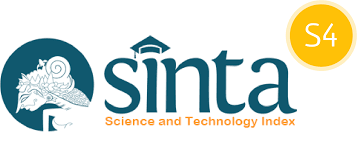Biopulping Of Bagasse Using Different Types Of White Rot Fungi and Different Incubation Times
Abstract
Bagasse is fibrous residue that remains after the sugarcane is crushed to extract it’s juice. It mostly consists of lignocellulosic materials that may provide material for paper production through biopulping process. White rot fungi (WRF) is producers of extracellular ligninolytic enzymes that has the capability to mineralize lignin compounds. Three types of white rot fungi that were used in this study are Phanerochaete chrysosporium, Pleurotus ostreatus and Schizophyllum commune. Each of it was inoculated on bagasse substrate within 0, 15, and 30 days of incubation. This study was aimed to know the effect of interaction between white rot fungi and incubation time in the biopulping process and to investigate the most appropriate fungus and incubation time to produce good material for paper making obtained from sugarcane bagasse. The experimental design was done by using Completely Randomized Design (CRD) with a factorial pattern in two factors and analyzed by using Analysis of Variance (ANNOVA) then followed by Duncan’s Multiple Range Test (DMRT) on highly different significance effect of the treatment. The result of this study showed that S. commune is the most effective fungi to degrade highly lignin content (17.38% to 8.88%) at 30 days of incubation, while P. chrysosporium is the most effective fungi to lowering cellulose content in small amount (23.64% to 19.38%) during 30 days of incubation.
References
Badan Pusat Statistik. 2015. Statistik Tebu Indonesia 2015. Jakarta: Badan Pusat Statistik Indonesia.
Chang, S.T. & P.G. Miles., 1989. Edible Mushroom and Their Cultivation. Florida : CRC Press, Inc., Boca raton Florida.
Chesson, A., 1981. Effects of sodium hydroxide on cereal straws in relation to the enhanced degradation of structural polysaccharides by rumen microorganisms. Journal Sci. Food Agric, 32: 745-758.
Johnson, F. X., & Vikram, S. 2012. Bioenergy For Sustainable Development And International Competitiveness: The Role of Sugarcane In Africa. New York: Routledge Publisher.
Khuluq, A. D. 2012. Potensi Pemanfaatan Limbah Tebu Sebagai Pakan Fermentasi Probiotik. Buletin Tanaman Tembakau, Serat & Minyak Industri, 4(1): 37-45.
Komalasari, K. 2009. Pengaruh perbandingan volume darah dan lisis buffer serta kecepatan sentrifugasi terhadap kualitas produk DNA pada sapi Frensian Holstein (FH). Skripsi. Institut Pertanian Bogor. Bogor.
Musa, B. H., Edy, B. M., & Nelly, A. 2012. Wood Rot Fungi Identification on Dead Wood Biodelignification Process in Taman Hutan Raya Bukit Barisan, Karo District. Jurnal USU, 1(2): 1-7.
Nuryadi, W., Anna, R., & Istiana, P. 2016. Isolasi dan Identifikasi Kapang Endofit dari Pohon Sengon Provenan Kepulauan Solomon Berdasarkan Morfologi dan Molekuler (Analisis rDNA ITS (Internal Transcribed Spacer). Jurnal Biologi. 5(6): 15-26.
Okane, I., Nakagiri, A., Ito, T. 1998. Endophytic fungi in leaves of ericaceous plants. Can J Bot. 76 (4): 657-663.
Paul, C. N. and Yu, H. S. 2008. Two Species of Endophytic Cladosporium in Pine Trees in Korea. Mycobiology. 36(4): 211-216.
Rodríguez-Couto, S. 2017. Industrial and environmental applications of white-rot fungi. Mycosphere, 8(3): 456-466.
Rulianah, S., Irfin, S., Mufid, Prayitno. 2017. Produksi Crude Selulase dari Bahan Baku Ampas Tebu Menggunakan Kapang Phanerochaete chrysosporium. Jurnal Teknik Kimia dan Lingkungan, 1(1): 17-27.
Saad, M. B.W., Oliveira, L.R.M., Cândido, R.G., Quintana, G., Rocha, G.J.M., & Gonçalves, A.R., 2008. Preliminary studies on fungal treatment of sugarcane straw for organosolv pulping. Enzyme and Microbial Technology, 43 (2): 220-225.
Singhal, A., Prashant, K. J., Indu, S. T. 2015. Biopulping of bagasse by Cryptococcus albidus under partially sterilized conditions. International Biodeterioration & Biodegradation, 97: 143-150.
Sahashi, N., Kubono, T., Miyasawa, Y., and Ito, S. 1999. Temporal variations in isolation frequency of endophytic fungi of Japanese beech. Can. J. Bot. 77: 192-202
Song Z., Kennedy G. P., Liew J. F., and Schilling S. J. 2016. Functional Ecology: Fungal Endophyte as Priority Colonizers initiating Wood Decomposition. UK: John wiley & Sonts.
Tan and Zou. 2001. Endophytes: A Rich Source of Functional Metabolites. Nat. Prod. Rep. 18: 448–459.
Wardani, M. T., Kusdiyantini, E., Budiharjo A. 2017. Identifikasi Isolat Monascus Sp. Hasil Isolasi Angkak Berdasarkan Gen Internal Transcribed Spacer (ITS) Dan Pengukuran Kandungan Pigmen. Jurnal Biologi, 6(2): 34-40.
Widowati, T., Bustanussalam, Harmastini, S., and Partomuan, S. 2016. Isolasi dan Identifikasi Kapang Endofit dari Tanaman Kunyit (Curcuma longa L.) Sebagai Penghasil Antioksidan. Biopropal Industri, 7(1): 7-16.














_copy.png)



